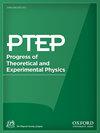杂化和杂化对带间配对有序双带超导体对称分类和磁响应函数的影响
IF 8.3
4区 物理与天体物理
Q1 Physics and Astronomy
引用次数: 0
摘要
在格林函数技术的框架下,从理论上研究了杂化和杂质(磁性和非磁性)势对具有等时s波带间配对顺序参数的两带超导体的配对对称性和磁响应的影响。首先,研究了自旋无关杂化和自旋依赖杂化对偶频或奇频库珀对产生的影响,这决定了超导体的对称分类和响应。其次,讨论了杂质对形成不同对称类的影响以及双带超导体的核响应函数。通过分离偶频和奇频配对对迈斯纳核的贡献,表明这两项之间的竞争决定了超导体的总迈斯纳效应。对于双带自旋单线态超导体,非磁性杂质散射根据Anderson定理不改变转变温度,而带内和带间磁性杂质散射都能抑制超导转变温度,其抑制速率符合Abrikosov-Gor'kov理论。对于自旋三重态配对,带间磁散射对对破断没有影响,而带内磁散射对破断起破断作用,抑制玻恩极限内的转变温度。在这种情况下,奇频超导对可以在同时存在带内和带间磁性杂质的情况下产生。因此,通过控制磁性杂质的浓度,可以设计出具有全抗磁性迈斯纳响应的三倍配对奇频超导体,从而稳定超导状态。这项技术为设计稳定的奇频超导体开辟了一条道路。本文章由计算机程序翻译,如有差异,请以英文原文为准。
Impurity and hybridization effects on the symmetry classification and magnetic response function of a two-band superconductor with inter-band pairing order
The effects of hybridization and impurities (magnetic and nonmagnetic) potentials on the pairing symmetries and magnetic response of a two-band superconductor with equal-time s-wave inter-band pairing order parameter in the framework of Green's function technique are investigated theoretically. First, the effects of spin-independent and spin-dependent hybridization on the generation of even- or odd-frequency Cooper pairs which determines the symmetry classification and the response of superconductor are studied. Next, the impurity effect on creating different symmetry classes and the kernel response function of a two-band superconductor are discussed. By separating the contributions of even- and odd-frequency pairing to the Meissner kernel, it is shown that the competition between these two terms determines the total Meissner effect of the superconductor. For a two-band spin-singlet superconductor, nonmagnetic impurity scatterings do not change transition temperature according to Anderson's theorem, while both intra- and inter-band magnetic impurity scattering cause the superconducting transition temperature suppression with the rate following the Abrikosov-Gor'kov theory. For spin-triplet pairing, inter-band magnetic scattering has no impact on pair breaking, while intra-band magnetic scattering acts as a pair breaker and suppresses the transition temperature in the Born limit. In this case, the odd-frequency superconducting pairs can be induced in the simultaneous presence of both intra-and inter-band magnetic impurities. Thus by controlling the concentration of magnetic impurities, it is possible to engineer triplet-paring odd-frequency superconductors with the total diamagnetic Meissner response which stabilizes the superconducting state. This technique opens a road for designing stable odd-frequency superconductors.
求助全文
通过发布文献求助,成功后即可免费获取论文全文。
去求助
来源期刊

Progress of Theoretical and Experimental Physics
PHYSICS, MULTIDISCIPLINARY-PHYSICS, PARTICLES & FIELDS
CiteScore
12.00
自引率
5.70%
发文量
148
审稿时长
17 weeks
期刊介绍:
Progress of Theoretical and Experimental Physics (PTEP) is an international journal that publishes articles on theoretical and experimental physics. PTEP is a fully open access, online-only journal published by the Physical Society of Japan.
PTEP is the successor to Progress of Theoretical Physics (PTP), which terminated in December 2012 and merged into PTEP in January 2013.
PTP was founded in 1946 by Hideki Yukawa, the first Japanese Nobel Laureate. PTEP, the successor journal to PTP, has a broader scope than that of PTP covering both theoretical and experimental physics.
PTEP mainly covers areas including particles and fields, nuclear physics, astrophysics and cosmology, beam physics and instrumentation, and general and mathematical physics.
 求助内容:
求助内容: 应助结果提醒方式:
应助结果提醒方式:


